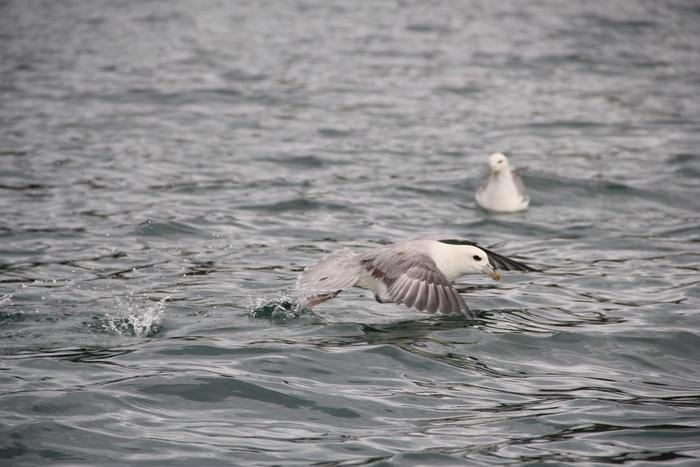According to a new study performed at the University College Cork (UCC), gaining more insights into fishing boats’ routes could help improve coastal planning and eventually protect seabirds that are at risk.
 An international team, led by the Marine Ecology Group at MaREI, the SFI Research Centre for Energy, Climate and Marine hosted by UCC, equipped seabirds with the latest tracking technology and found that fishing vessels can help figure out where the birds go to feed. Image Credit: University College Cork
An international team, led by the Marine Ecology Group at MaREI, the SFI Research Centre for Energy, Climate and Marine hosted by UCC, equipped seabirds with the latest tracking technology and found that fishing vessels can help figure out where the birds go to feed. Image Credit: University College Cork
An international group, headed by the Marine Ecology Group at MaREI, the SFI Research Centre for Energy, Climate and Marine hosted by UCC, fitted seabirds with the new tracking technology and discovered that fishing vessels can help understand where the birds go to feed.
Northern fulmars, a relative of the albatross, were shown to travel hundreds of kilometers in just a matter of days for a meal before returning home, and their tracks disclosed that up to half of the fulmars were following fishing vessels for food because of the fishing waste being thrown overboard.
Furthermore, the scientists looked at the broader distribution of fulmars near Irish and UK waters and discovered that areas of the sea that fishing vessels spent the most time in were also fulmars that went to feed. Northern fulmars are known to be a threatened species in Europe with markedly diminishing populations.
This new knowledge of their feeding grounds is necessarily significant for safeguarding them from the hazards they might face at sea at a time when the majority of the world’s seabird populations are endangered. Frequently, fulmars are accidentally caught by vessels.
Since fulmars have the potential to live up to 50 years old, even the occasional bycatch in fishing gear can have a big impact on their population. This study stresses the requirement for best practices when fishing, such as bird-scaring lines while setting nets or trailing longlines.
Information about where seabirds go at sea is vital for making sure that new offshore developments, including windfarms, can be designed to do the least amount of harm. That’s why studies such as this one are so important.
Jamie Darby, Study Lead Author, MaREI, University College Cork
“Humans have given seabirds a lot to contend with. They are sensitive to oil and plastic pollution; we accidentally catch them in commercial fishing gears; we’ve brought rats and other invasive species onto many of their breeding colonies over the last few centuries,” added Darby.
Ireland consists of a huge expanse of marine territory and attracts fishing vessels from overseas since these fishing grounds are highly productive. Ireland’s dedication to renewable energy implies that wind farms will soon be a general fixture along the coasts.
But provided the islands and cliffs of Ireland are home to 24 species of seabird, proper planning of such energy generators is necessary if these birds are to be safeguarded.
Journal Reference:
Darby, J.-H., et al. (2021) Foraging distribution of breeding northern fulmars is predicted by commercial fisheries. Marine Ecology Progress Series. doi.org/10.3354/meps13887.